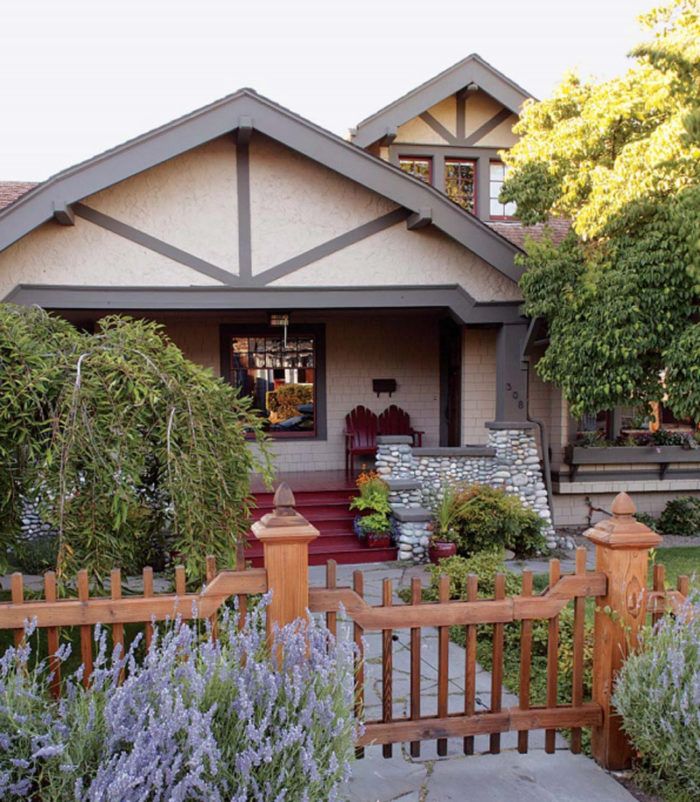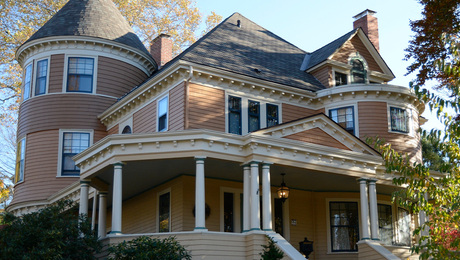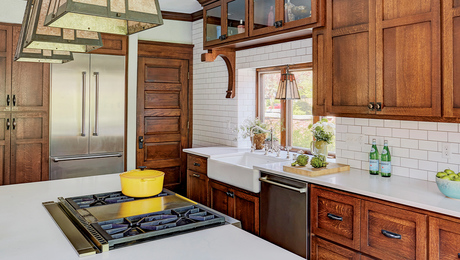American Classic: The Timeless Bungalow
After 100 years, these well-crafted homes still make sense for the way we live.

Synopsis: What is it about a bungalow that seems so inviting? This American classic has comfortable proportions, attention to fine craftsmanship, and all-over charm that have contributed to its enduring appeal over the years. Louis Wasserman and M. Caren Connolly, authors of Taunton’s book Bungalows, invite you inside a lovingly restored bungalow in Seattle and tell how the homeowners brought the home back to life.
Gary and Beth Milici jumped at the opportunity to buy a bungalow listed in a Seattle newspaper as “not for the faint-hearted.” They had been looking for a traditional house that could incorporate their modern lifestyle, and Gary, as both a visionary and a romantic, wasn’t discouraged by the amount of work the 1912 house needed.
The bungalow was sadly neglected, but its integrity was intact, so the couple set out to bring the cozy house back to life. Like many people these days, Gary and Beth are embracing traditional American neighborhoods— and classic houses like the bungalow that give a neighborhood its sense of place.
The appeal of the bungalow is the same now as it was 100 years ago. At a glance, you recognize the solidity and sense of shelter. Inside, the rooms are arranged in an open way that reinforces family togetherness, with easy access to the yard to encourage outdoor living. On closer inspection, you can appreciate the warmth of the wood trim and the quality of the finish.
Progress on the Milicis’ bungalow was slow. It took a worker more than two weeks to strip paint from the woodwork in the dining room alone. By finishing the attic and the basement, Gary and Beth tripled the living space to more than 3,000 square feet, all within the original footprint of the house. And by updating within the bungalow aesthetic— but without attempting a slavish re-creation—they wound up with a classic home that makes sense for today.
What gives a bungalow its character?
DOMINANT ROOFLINES, LARGE DORMERS
Bungalows are meant to look like one-story houses (even though most have second-floor bedrooms), with a strong connection to the site and an overall humbleness of scale, reflecting their relatively small size and lack of wasted space. A dominant roof, often with a heavy overhang, supported by squat columns and braces, emphasizes the ground hugging aspect of the bungalow. Dormers add headroom but maintain an intimate scale.
Blending old and new
The Milicis wanted their bungalow to reflect its original spirit, but they weren’t interested in pristine historical accuracy. In the dining room, they brought back the original woodwork, ceiling beams, and built-ins, and they used period lighting and furniture. The dark-stained wood and rich-hued paint lend the dining room a quiet grandeur and a degree of intimacy appropriate for dinner with friends. But in the living room, the Milicis wanted a more open, less formal feel for everyday family activities—reading, talking, and gathering—so they painted the walls and trim in light hues. The Arts and Crafts-influenced fireplace is new, but it fits right in, and its wood-paneled mantel helps tie the living room to the wood-trimmed dining room and kitchen. The fence is also new, but its Craftsman-style design makes it look as if it has always been there.
For more photos and details on this updated bungalow, click the View PDF button below.

























